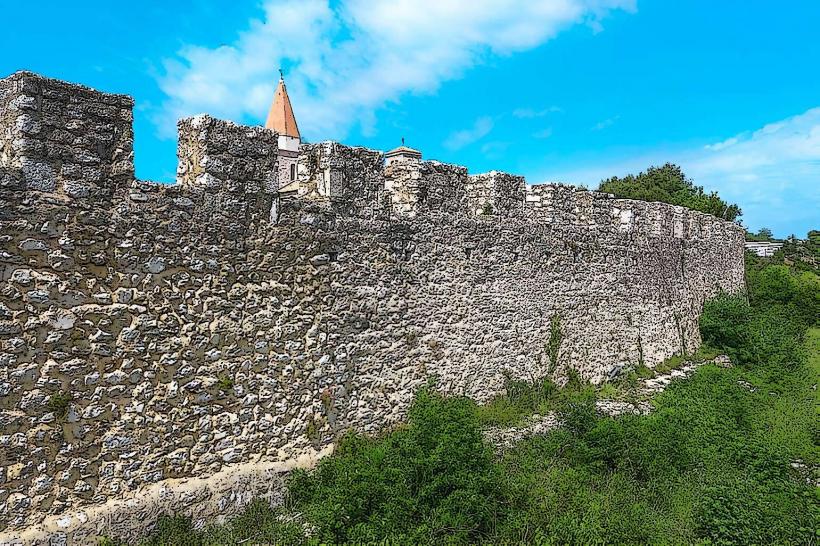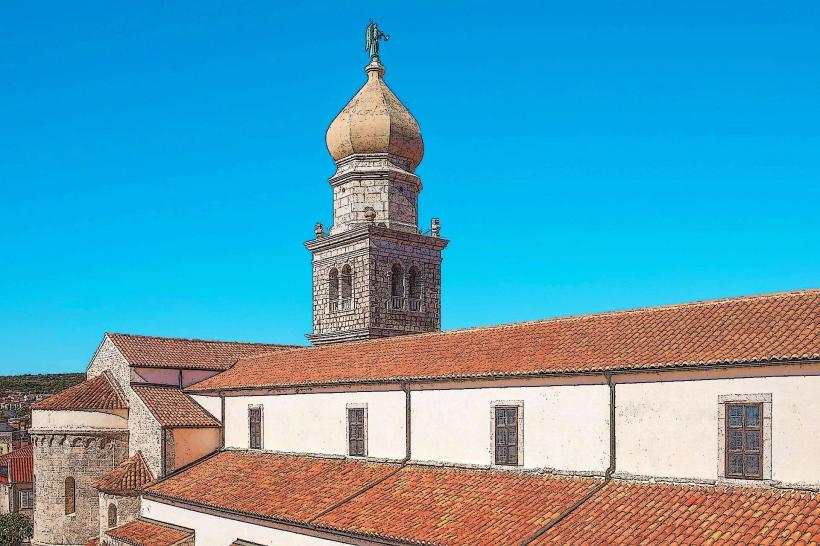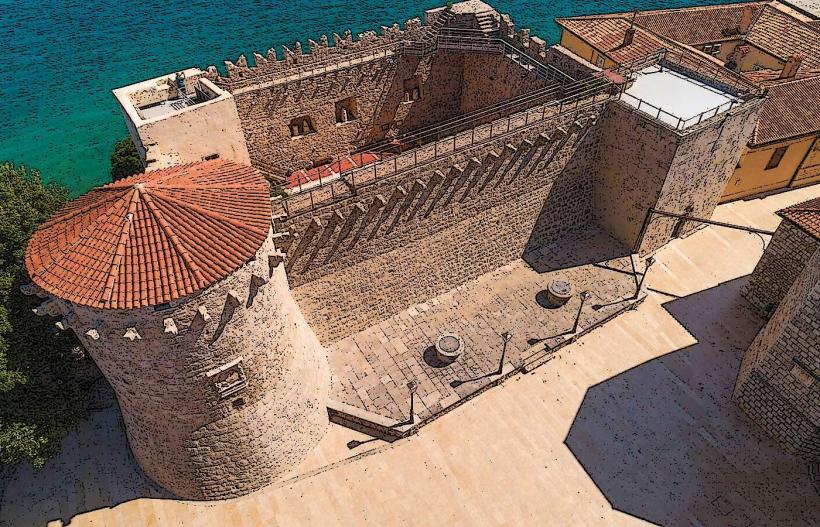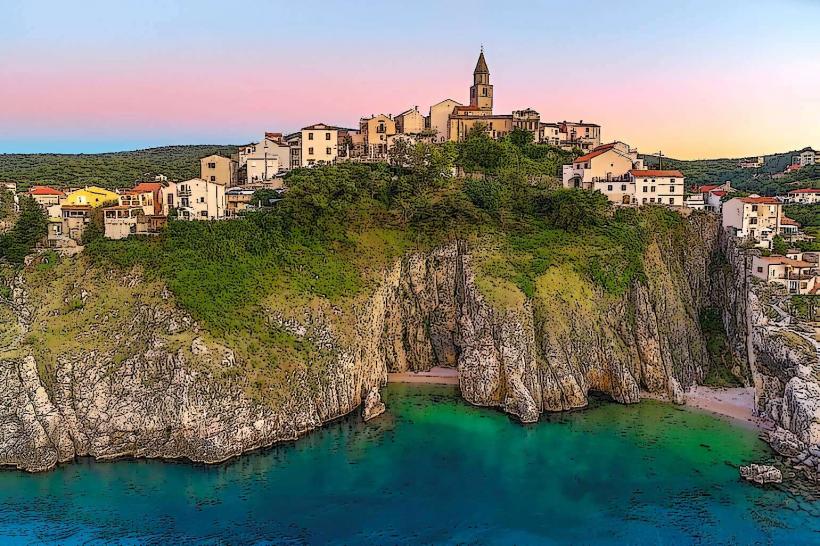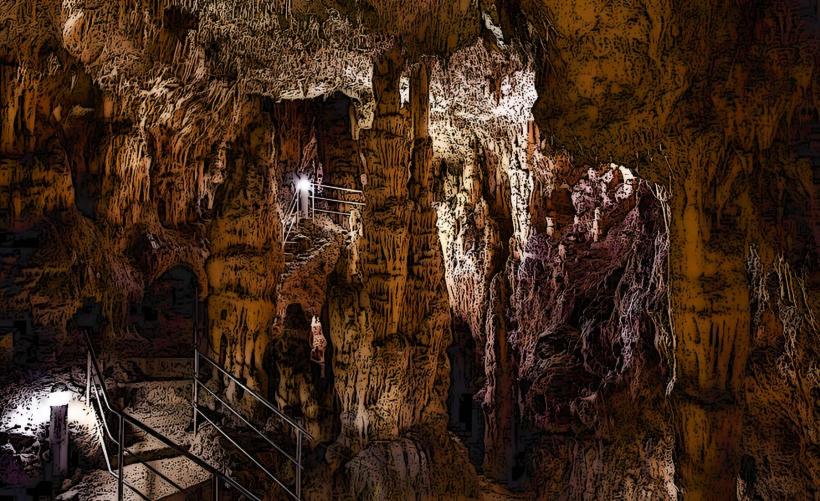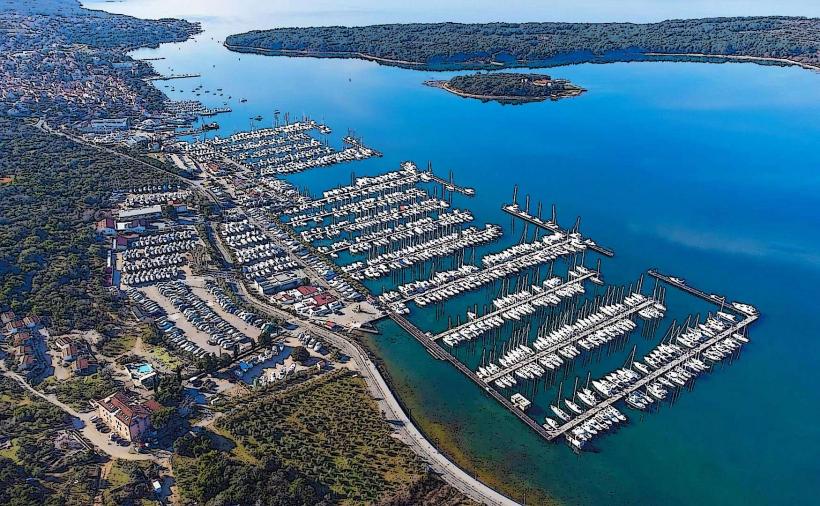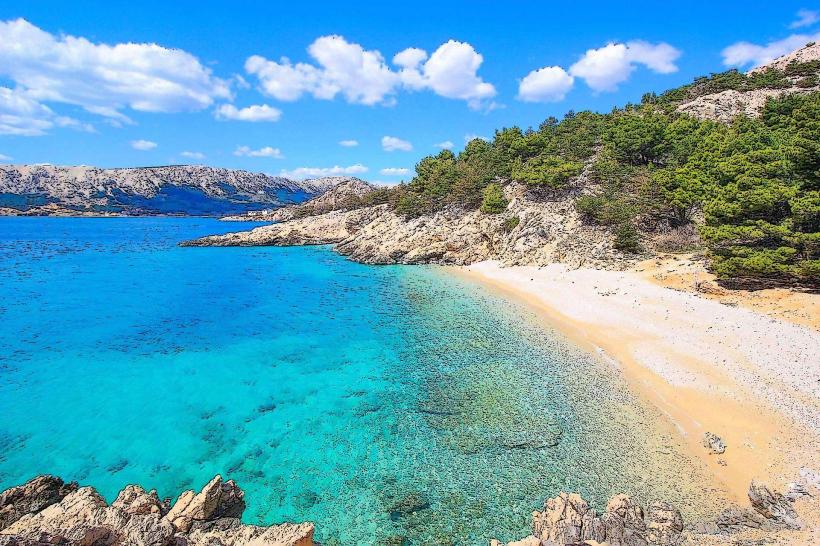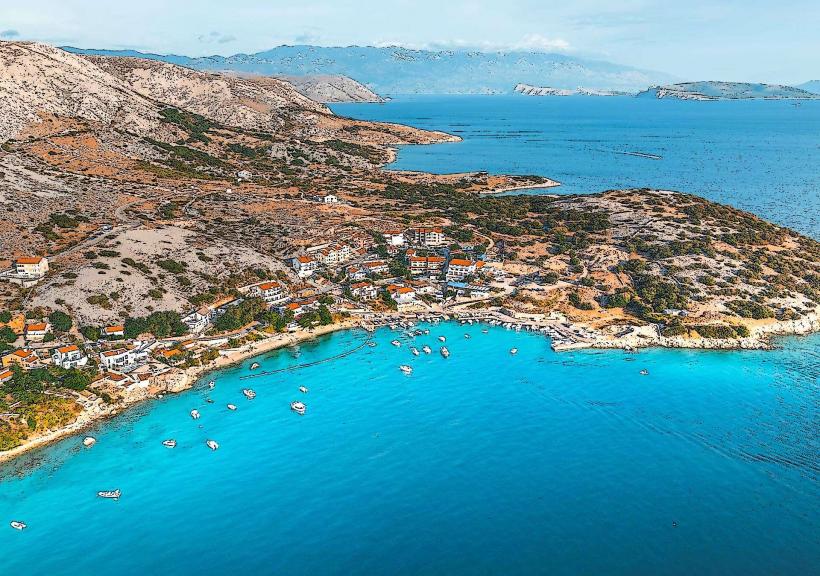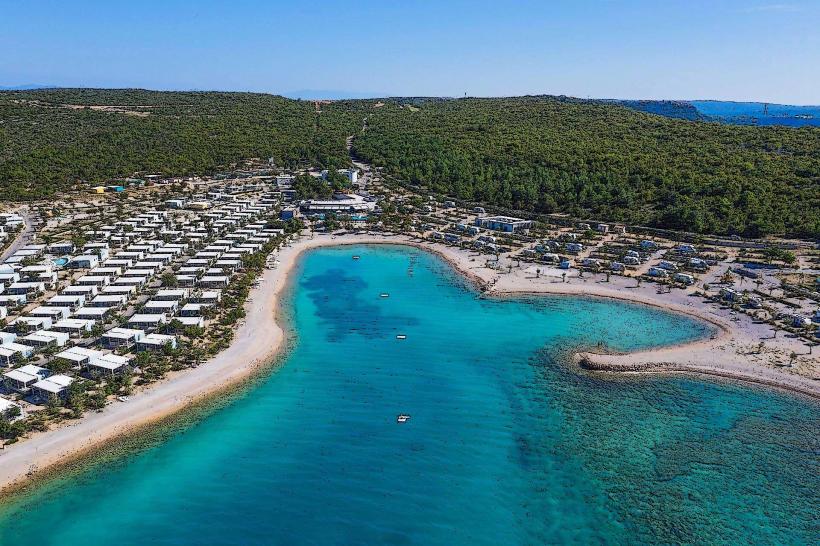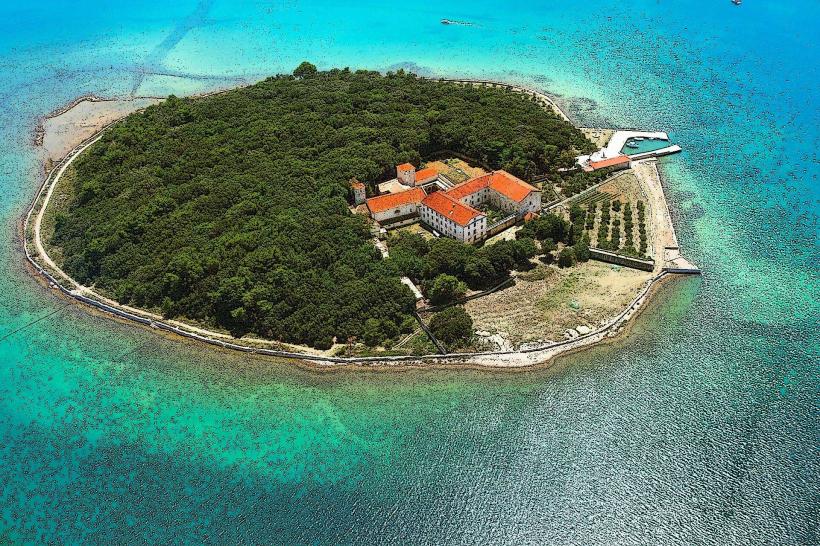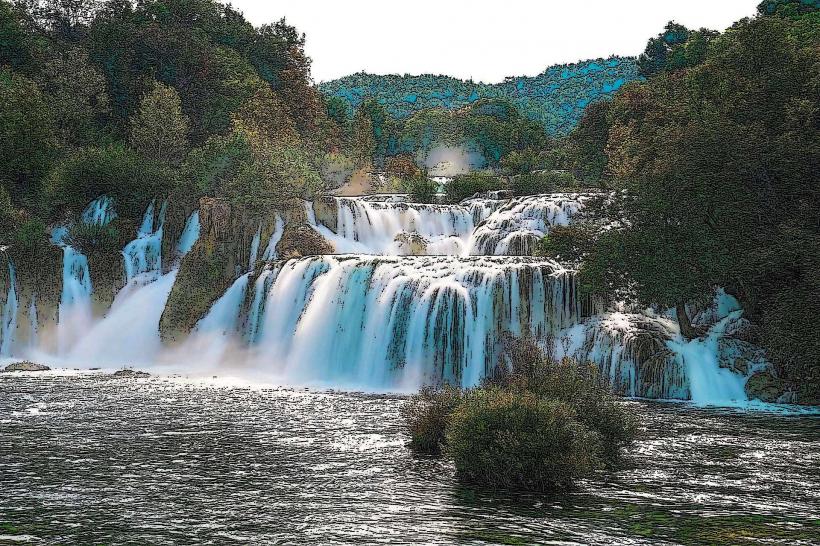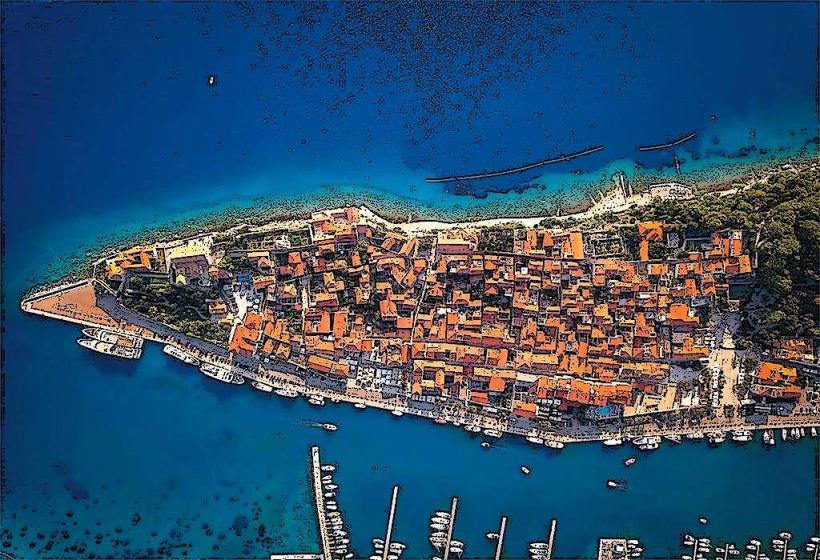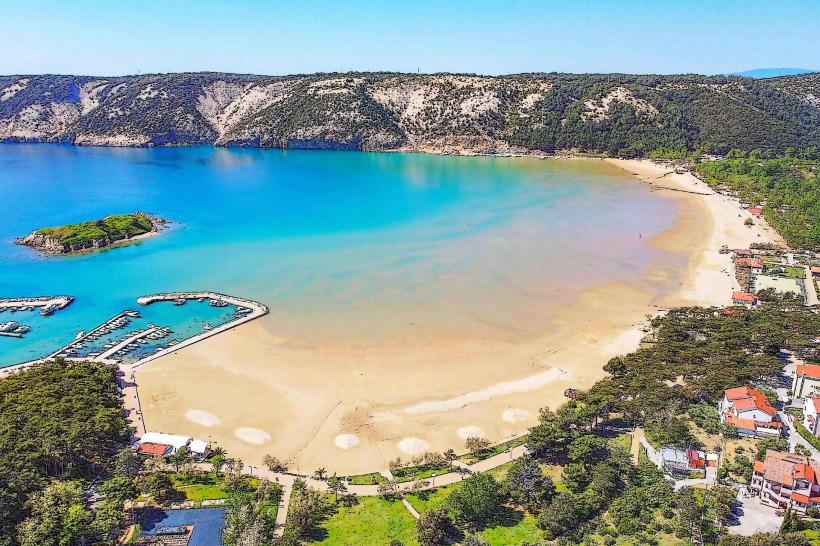Information
City: KrkCountry: Croatia
Continent: Europe
Krk is the largest island in Croatia, located in the northern Adriatic Sea. It’s a popular destination for both tourists and locals, known for its rich history, beautiful landscapes, charming old towns, and a wide variety of activities. Krk offers a blend of natural beauty, cultural heritage, and modern tourism amenities. Here’s a detailed look at the island of Krk:
Geography and Setting
- Island Location: Krk is situated off the coast of mainland Croatia, connected to the mainland by a bridge. It lies near the city of Rijeka, the largest city in the region, and is part of the Kvarner Bay group of islands.
- Landscape: Krk is characterized by diverse landscapes, from rocky coastlines and cliffs to lush forests and fertile plains. The northern part of the island has more rugged terrain, with hills and forests, while the southern part features more agricultural land with vineyards, olive groves, and orchards. The island is well known for its relatively mild Mediterranean climate, making it a year-round destination.
City Layout and Neighborhoods
- Krk Town: The island's largest settlement and administrative center, Krk Town, is a charming historic town with narrow streets, ancient Roman and medieval architecture, and a rich cultural heritage. The town is home to the Krk Cathedral, the Roman-era Frankopan Castle, and the town's impressive town walls.
- Baška: Located on the southern coast of the island, Baška is one of Krk’s most popular tourist destinations, known for its stunning beach, Vela Plaža, and the famous Baška tablet, a medieval stone inscription that is an important Croatian historical artifact.
- Punat: Punat is a small town located on a bay with crystal-clear waters, perfect for sailing and other water activities. It is home to the small island of Košljun, which houses a Franciscan monastery and a museum.
- Vrbnik: A picturesque village perched on a cliff overlooking the sea, Vrbnik is known for its vineyards and its production of Žlahtina, a white wine variety native to the island. The village also has a charming medieval atmosphere and is a great place for wine enthusiasts to explore.
- Njivice: Located on the western side of the island, Njivice is a modern resort town with beautiful beaches and plenty of facilities for tourists. It’s ideal for families and those looking for a more relaxed, seaside experience.
Cultural Atmosphere
- Historical Significance: Krk has been inhabited for thousands of years, with evidence of Roman, Byzantine, Venetian, and Croatian influences throughout the island. Its strategic location in the Adriatic made it a key point for various empires, and this historical richness is reflected in its towns and cultural landmarks.
- The Baška Tablet: One of the most significant historical finds in Croatia, the Baška tablet, is a 12th-century stone inscription that’s considered the first monument written in Croatian using the Glagolitic script. It is displayed in the Church of St. Lucy in Baška.
- Architecture: The architecture of Krk reflects its long history. Roman and medieval influences are prevalent in towns like Krk and Vrbnik. The Krk Cathedral, with its Romanesque features, and the Frankopan Castle, with its defensive walls and towers, are key highlights.
- Festivals and Events: Krk hosts numerous cultural events throughout the year, including the Krk Summer Festival, which features performances of music, theater, and dance. The island also celebrates local festivals tied to the Catholic calendar, such as processions and religious feasts.
Culinary Scene
- Krk’s Olive Oil: The island’s olive groves are some of the oldest in Croatia, and Krk olive oil is renowned for its quality. Olive oil production is a significant part of the local economy, and visitors can tour local olive farms to taste freshly pressed oils.
- Seafood and Fish: Krk is a coastal island, so its cuisine is rich in fresh seafood. Dishes such as grilled fish, black risotto (made with cuttlefish ink), and octopus salad are commonly found on the island’s menus.
- Local Wines: The island produces a variety of wines, with Žlahtina being the most famous. This crisp white wine is produced mostly in the Vrbnik area, and wine tasting tours are popular for those who want to experience the island’s viticulture.
- Lamb and Local Dishes: Krk’s fertile land also supports the production of lamb, which is often roasted or cooked in stews. Other traditional dishes include pasticada (beef stew) and fritule (fried dough balls typically served as a dessert).
- Herbs and Local Produce: The island’s cuisine is also flavored with local herbs such as sage, rosemary, and thyme, which are used in many dishes and oils.
Nature and Outdoor Activities
- Beaches: Krk has numerous beaches, many of which are pebble or rocky, though there are also sandy options in areas like Baška. Vela Plaža in Baška is the largest and most popular beach, ideal for swimming, sunbathing, and water sports.
- Water Sports: With its crystal-clear waters, Krk is perfect for a range of water activities such as snorkeling, scuba diving, windsurfing, sailing, and kayaking. The bays and coves around the island offer excellent conditions for these sports.
- Hiking and Cycling: Krk’s varied terrain provides many opportunities for outdoor activities, including hiking and cycling. The island has several marked trails, including those that lead to the island’s highest peak, Obzova (568 meters), which offers panoramic views of the island and surrounding area.
- Botanical Gardens and Parks: The island is home to several lush parks and gardens. The Krk Park, located near the town of Krk, is a large area featuring Mediterranean vegetation, while the beaches and forest areas provide a haven for nature lovers.
- Košljun Island: The small island of Košljun, located just off Punat, is home to a Franciscan monastery and a rich collection of religious artifacts. It is also a protected nature reserve, with various plant and animal species to discover.
Nightlife and Social Scene
- Krk Town: Krk Town has a laid-back nightlife scene with numerous cafes, bars, and restaurants where you can enjoy live music or a quiet drink by the sea. The town's medieval ambiance offers a romantic setting for evening strolls and dinners.
- Baška: Baška has a lively atmosphere in the summer months, with bars and cafes lining the beachfront. While not as party-focused as some other Croatian destinations, Baška offers a more relaxed nightlife, perfect for families and couples.
- Punat and Njivice: Both towns offer peaceful evenings with beachfront dining and quieter nightlife options. Punat has a handful of local bars and cafes, while Njivice provides a more modern feel with restaurants and bars along the beach.
Daily Life
- Local Markets: The island has several markets, especially in Krk Town, where visitors can buy fresh local produce, seafood, olive oil, and handmade goods like jewelry and crafts.
- Agriculture and Fishing: Krk’s agriculture is a key part of the island’s economy, with vineyards, olive groves, and fields of lavender dotting the landscape. Fishing also plays an important role, especially in the coastal towns.
- Small Villages: Aside from the larger towns, Krk has numerous small villages where life moves at a slower pace. These villages maintain traditional ways of living, with stone houses, narrow streets, and local family-run businesses.
Transportation and Connectivity
- Bridge to the Mainland: Krk is connected to the mainland via the Krk Bridge, making it easy to access by car. The island is a short drive from Rijeka, where the nearest airport is located.
- Ferries: Krk is well connected by ferry services to nearby islands, such as Cres, Rab, and Lošinj. Ferries also connect the island to the mainland port of Rijeka.
- Public Transport and Car Rentals: Public buses run between towns on the island, but renting a car or scooter is the most convenient way to explore at your own pace.
- Cycling: Cycling is becoming increasingly popular on Krk, with several bike paths and rental shops available in the towns.
Climate and Seasonal Life
- Mediterranean Climate: Krk has a Mediterranean climate, with hot, dry summers and mild winters. The island enjoys over 2,500 hours of sunshine per year, making it an attractive destination year-round.
- Tourist Seasons: The peak tourist season is in the summer months, with the island's beaches and resorts attracting visitors from around the world. Spring and autumn offer a quieter experience, with pleasant weather ideal for hiking and exploring.
- Winter Calm: While the island is quieter in winter, the mild temperatures make it an appealing destination for off-season travelers who seek peace and solitude.
Modern Krk
- Tourism Development: While Krk has developed as a popular tourist destination, it has managed to maintain much of its traditional charm, especially in its towns and villages. The island offers a mix of luxury resorts, boutique hotels, and traditional guesthouses.
- Sustainable Tourism: Krk is increasingly focusing on sustainable tourism, promoting eco-friendly accommodations, organic farming, and the preservation of its natural and cultural heritage.
Krk is a beautiful island that offers a diverse range of experiences, from its historical landmarks to its stunning natural landscapes and vibrant local culture. Whether you're seeking outdoor activities, historical exploration, or simply relaxing by the sea, Krk has something for everyone.

